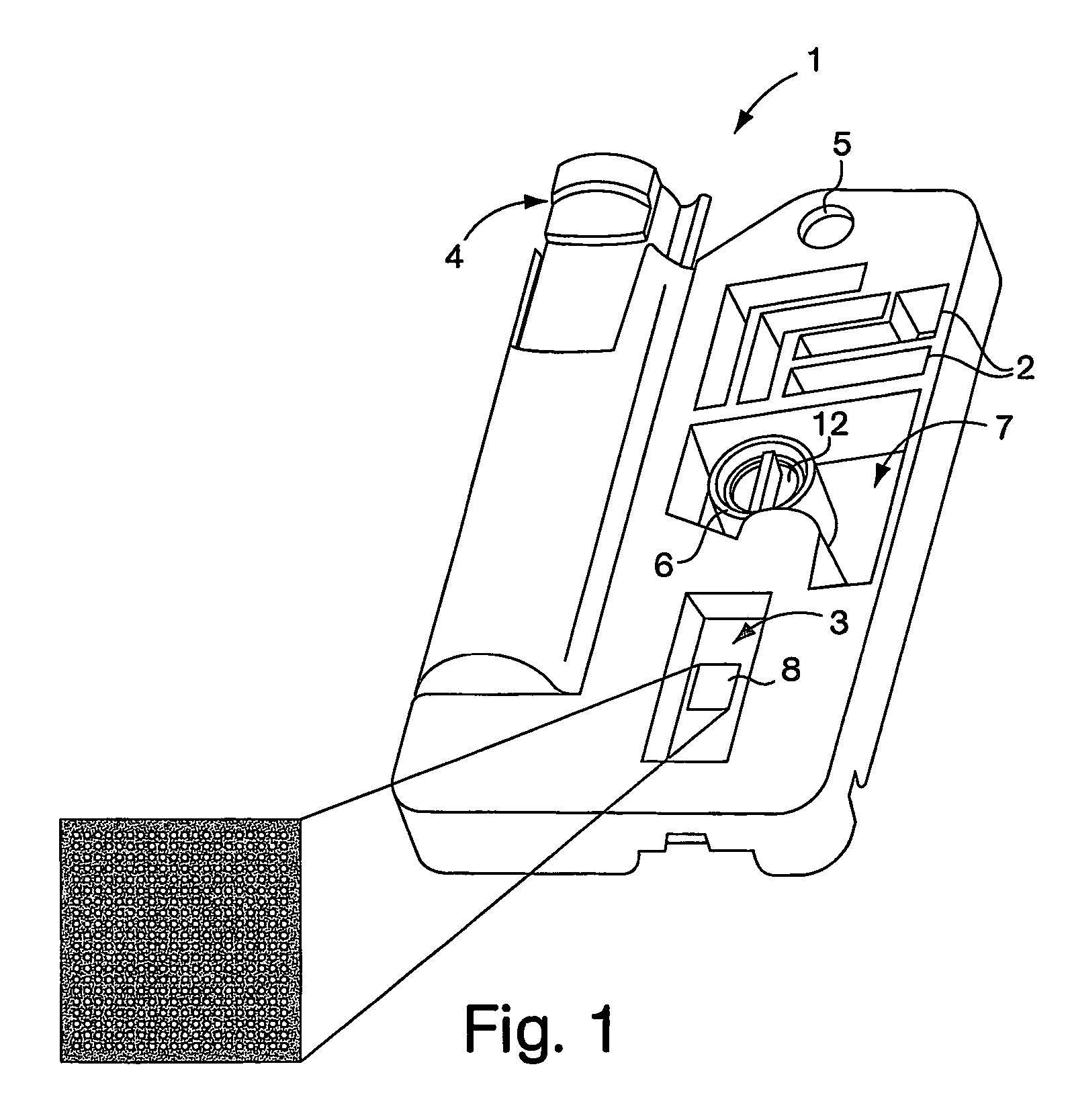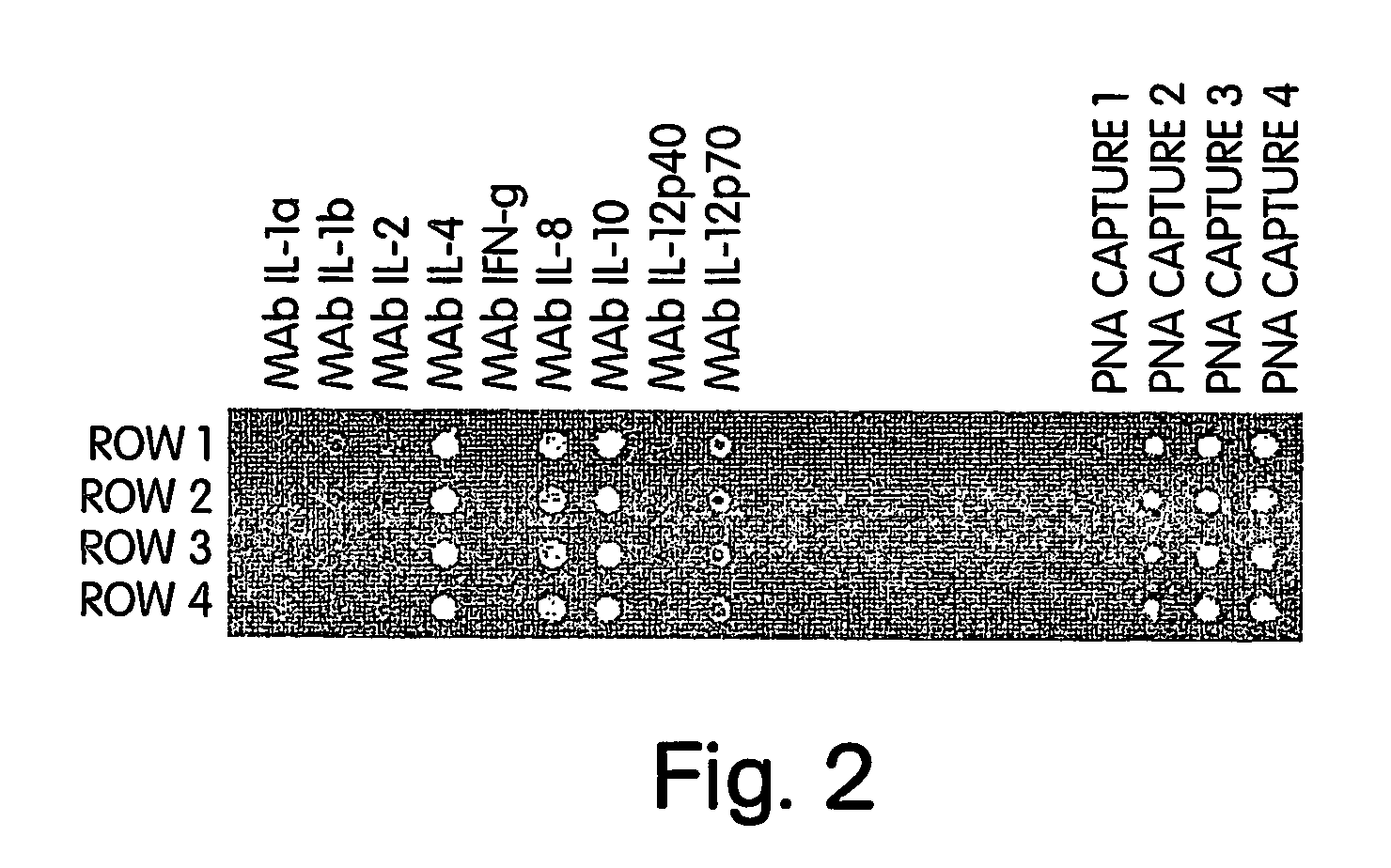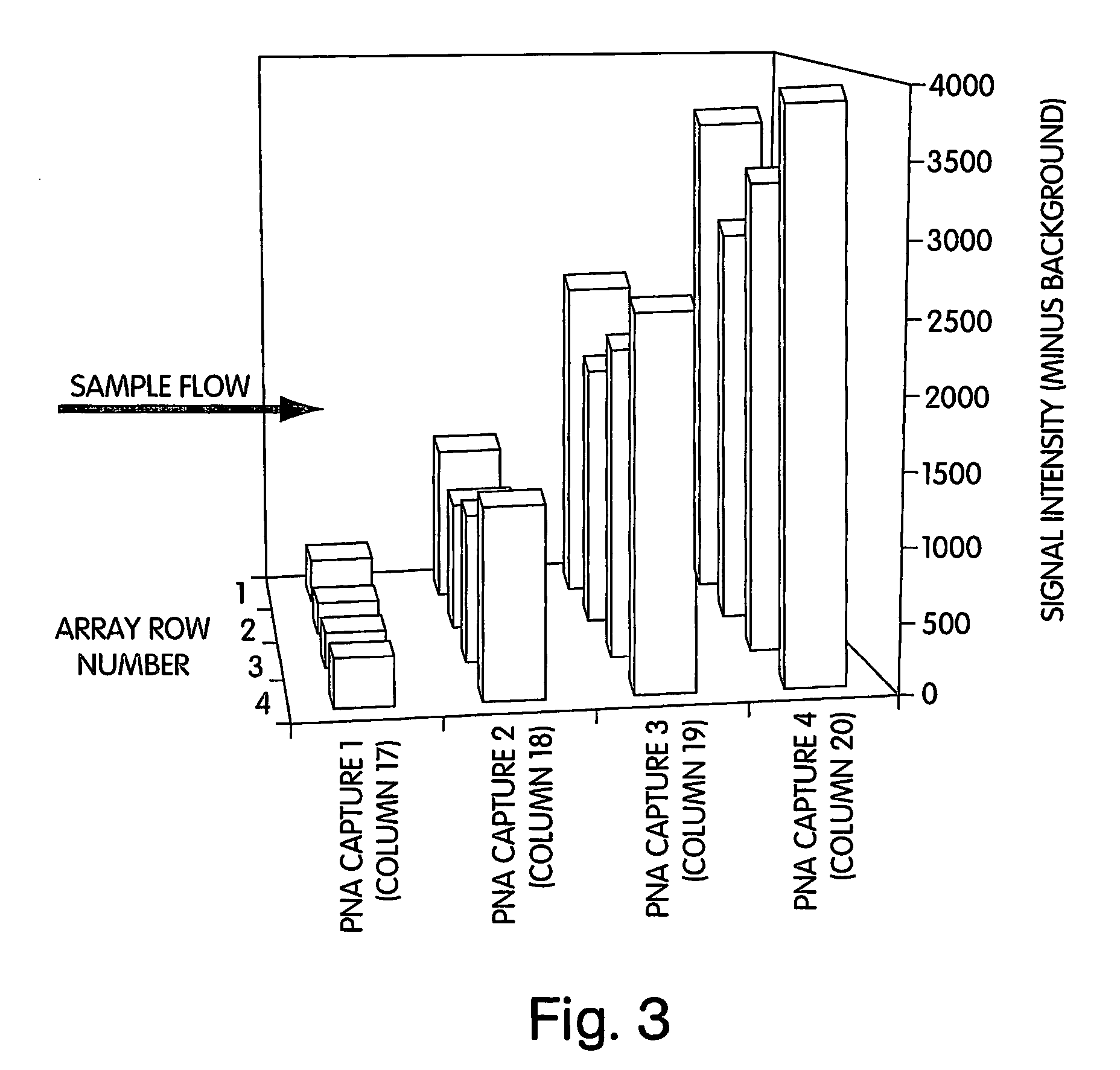Use of nucleic acid mimics for internal reference and calibration in a flow cell microarray binding assay
a technology of flow cell microarrays and mimics, which is applied in the field of high throughput proteomics, can solve the problems of non-uniform assay conditions, non-uniform flow velocity experiences in individual flow streams, and difficult calibration of internal reference, so as to reduce the cross-reactivity between non-complementary sequences, reduce the intensity, and reduce the contact time
- Summary
- Abstract
- Description
- Claims
- Application Information
AI Technical Summary
Benefits of technology
Problems solved by technology
Method used
Image
Examples
examples
Array Fabrication
[0092] The following cysteine-modified “capture” PNA oligomers, for use in calibration reaction spots immobilized on a microassay sensor chip according to the present invention, were designed for use as an internal reference and calibration indicator:
Acetyl-Cys-OO-GTAGTCCG,(“Capture 1”; SEQ ID NO:1)Acetyl-Cys-OO-CGAAATGT,(“Capture 2”; SEQ ID NO:2)Acetyl-Cys-OO-GCGTAACT,(“Capture 3”; SEQ ID NO:3)andAcetyl-Cys-OO-TCACAAGC.(“Capture 4”; SEQ ID NO:4)
[0093] The following complementary biotinylated “detection” PNA oligomers, to be added to the reagent reservoirs for use as calibration reagents according to the present invention, were designed to form a duplex with the immobilized “capture” ligands on the chip:
Biotinyl-OO-CGGACTAC,(“Detection 1”;SEQ ID NO:5)Biotinyl-OO-ACATTTCG,(“Detection 2”;SEQ ID NO:6)Biotinyl-OO-AGTTACGC,(“Detection 3”;SEQ ID NO:7)andBiotinyl-OO-GCT-TGT-GA.(“Detection 4”;SEQ ID NO:8)
In the foregoing formulae, “—OO—” represents a polyethylene gly...
PUM
| Property | Measurement | Unit |
|---|---|---|
| pH | aaaaa | aaaaa |
| affinity | aaaaa | aaaaa |
| fluorescence | aaaaa | aaaaa |
Abstract
Description
Claims
Application Information
 Login to View More
Login to View More - R&D
- Intellectual Property
- Life Sciences
- Materials
- Tech Scout
- Unparalleled Data Quality
- Higher Quality Content
- 60% Fewer Hallucinations
Browse by: Latest US Patents, China's latest patents, Technical Efficacy Thesaurus, Application Domain, Technology Topic, Popular Technical Reports.
© 2025 PatSnap. All rights reserved.Legal|Privacy policy|Modern Slavery Act Transparency Statement|Sitemap|About US| Contact US: help@patsnap.com



